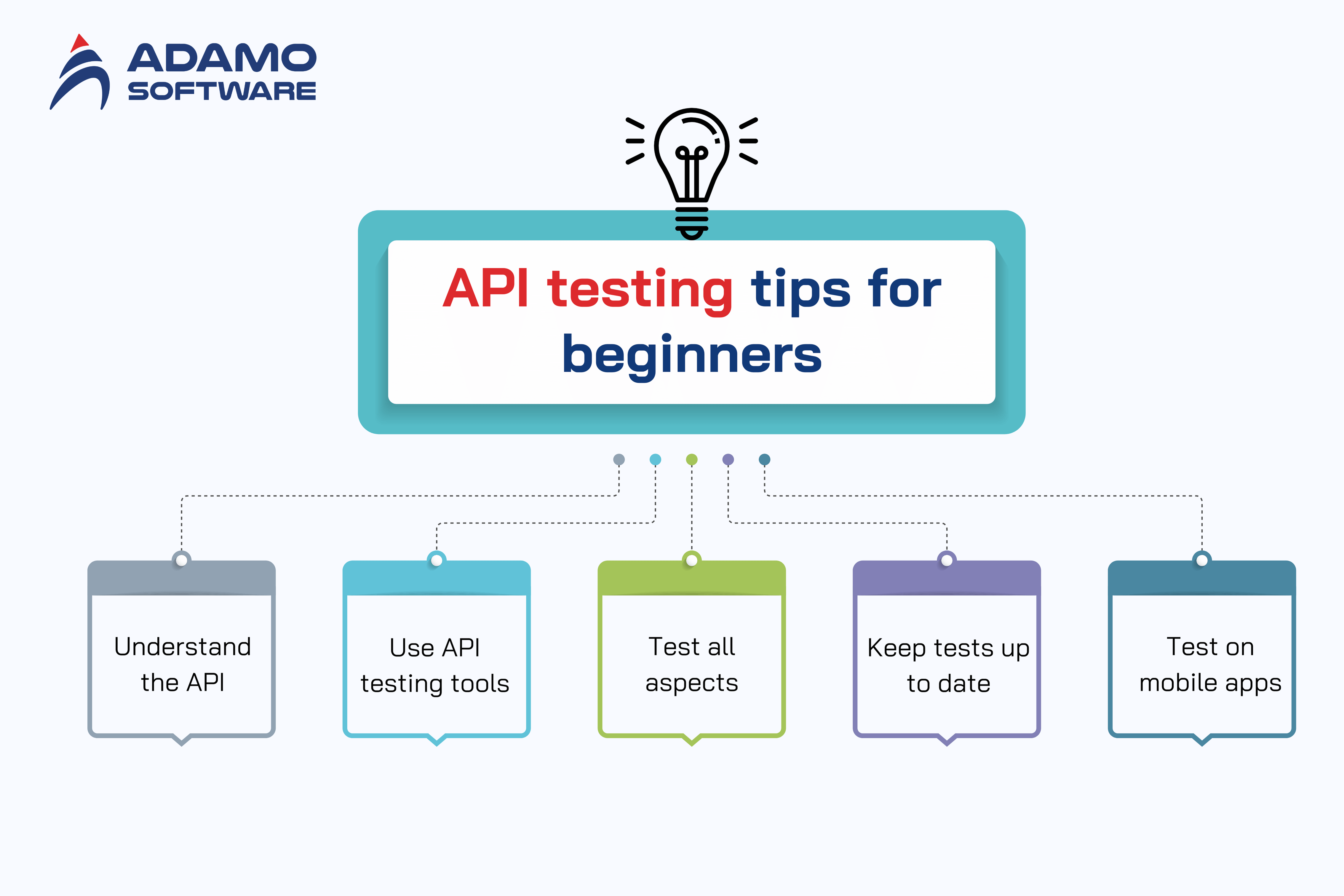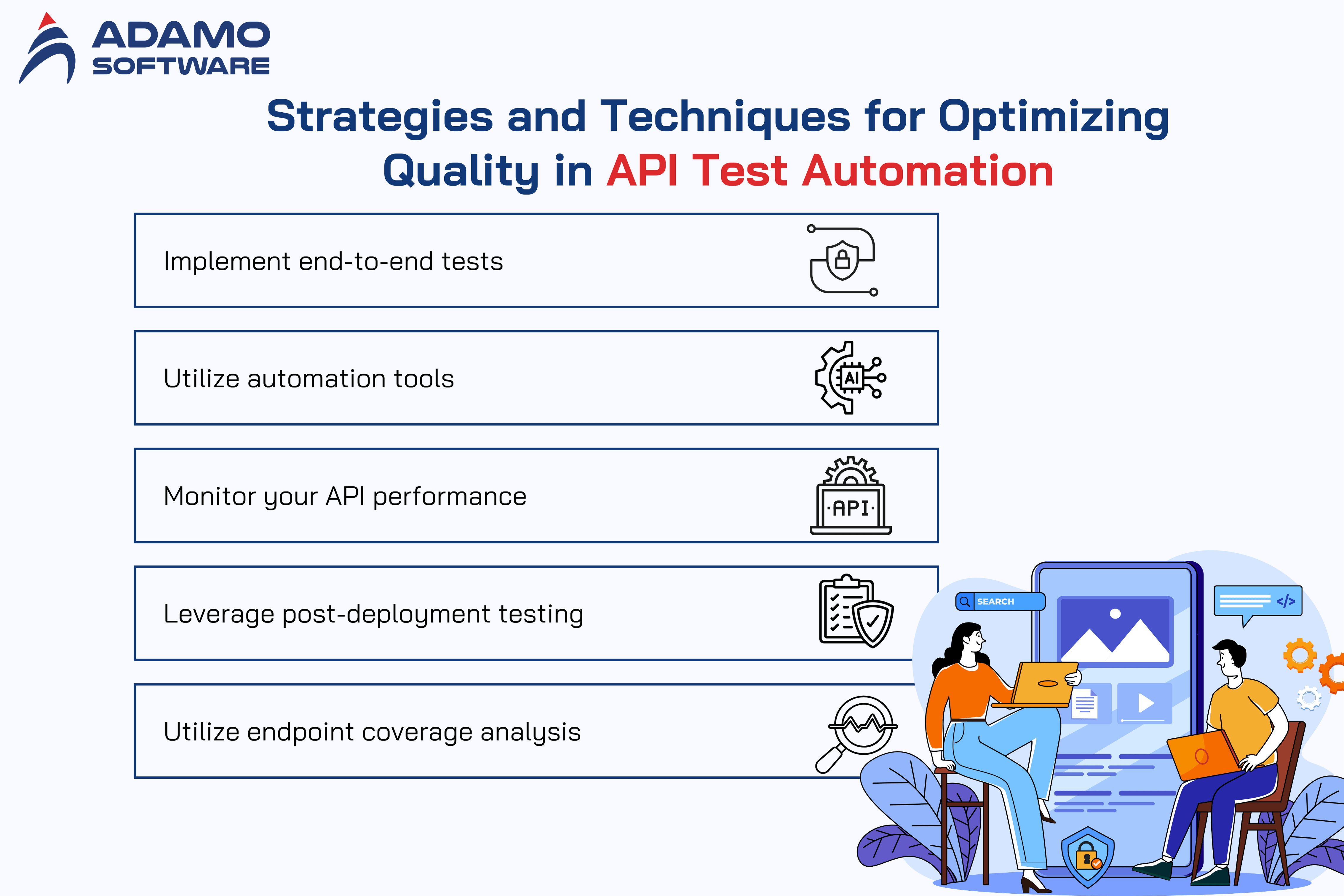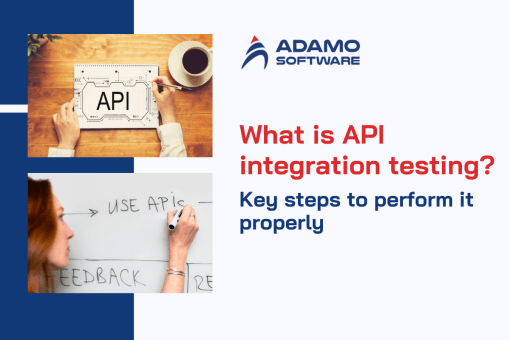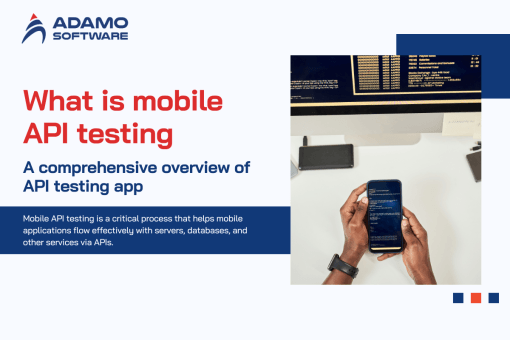How to test API: A step-by-step guide for beginners

In the world we live in today, where everything goes with the flow, APIs are a very important factor. APIs (Application Programming Interface) are the key to the connection of different software applications, such as different apps from mobile to web services. No matter if you’re a developer or a tester, learning how to test API is a must to ensure efficient and safe performance.
API testing goes further than verifying that an API works. It makes sure has it Testing APIs also help you to see if it relies on preconditions for delivering Testing APIs also help you to see if it relies on preconditions for delivering results and w to test API, you can catch problems before customers are affected, ensuring you have a higher quality software product.
In this article, we will walk you through a guide on how to test API for complete beginners! After reading this, you’ll know how to test API from beginning to end, giving you the confidence to tackle any API testing task. It is time to start learning the art of API testing together!
I. What is API testing?
API, or Application Programming Interface, is a tool that enables various software to exchange information with one another. Third-party service can be added while various data sources can be accessed and connected to web or mobile application components. Since APIs are the central part of modern development, you need to know how to test APIs to ensure everything is okay.
API testing validates an API in all its dimensional capacity and ensures it meets the required standard. It is possible to learn how to test API by doing several things. Those include testing if the API returns the correct values, how it behaves when encountering an error, and how it manages information. This increases confidence that the system will be carefully tested to minimize bugs or inconsistencies before it gets to users. Some of the testing usually comprises checking the data formats, response duration, and numerous other functions under some circumstances.
You come to know how to test API either manually or by using different automatic methods. The manual testing process uses tools like Postman or the API Tester to send requests and respond. Automated testing, however, sends special programs to mimic requests and then compare the responses with the expected values. As with any software testing approach, knowing how to test API with each method will be essential for successful testing.
Convenient tools for learning how to test API include SOAPUI, Postman, Runscope, API Tester, and many others. These tools enable you to ensure how well your API is functioning, efficient, and secure. Other good practices can be adopted to improve testing quality, such as parallel, small-focused tests.
Additionally, there are some principles that you need to be aware of when it comes to learning how to test API. This includes incorporating tests in the continuous delivery construct, keeping the tests simple and easy to update, and being boundary driven. By using the right tools and applying these principles, you can simplify the testing process and boost your software’s overall quality.
Also read: Benefits of API in software testing: Top upcoming trends to look for
II. Recommended API testing tips for beginners
While API testing can be hard, these following tips can really help make the process more endurable. Learning how to test API step by step and following some practical tips can help you get through the process with less struggles. Here’s how to test API effectively:

- Understand the API: Before you start testing, you should understand the API inside out. Read the docs and everything else you can find to define your expectations and the API’s role.
- Use API testing tools: API Tester, Postman or SoapUI can come in handy when learning how to test API. They will help you figure out how the API works and will even help you to detect potential issues.
- Test all aspects: Remember to test all parts of the API, such as input validation, security, and how it handles errors. It is key to run these to ensure the API is doing what it should.
- Keep tests up to date: Your tests need to evolve as the API evolves to make sure you can detect all the new issues that arise. It’s an excellent way to ensure you are always testing the latest version.
- Test on mobile apps: The increase in remote work and mobile usage makes it even better to use mobile apps for API testing — like API Tester. This lets you work no matter where you are and gives an API test on the go.
These tips will teach you how to test API more effectively, making the process smoother and more efficient.
III. Some common bugs found in API testing
There are plenty of things that API testing will be able to uncover about your application that could impact the way it functionality. Learning how to test API properly will help you find most common problems in early stage. This will significantly benefit you and your team, as it’s much better for API quality in later stages.
Here’s how to test API effectively to catch some of the most frequent bugs:

- Incorrect data formatting: API testing can help you find out when an API returns wrong data in an incorrect format (like JSON instead of XML). These formats can cause errors to clients when they parse the data.
- Missing data or parameters: When you conduct API testing, you can check whether API keys are handled correctly. This is important, because if they’re not handled well, the service can have unauthorized access or errors.
- Performance and scalability issues: With load testing, you can figure out if an API can handle heavy traffic and scale itself accordingly. Problems like slow response times, timeouts, and service interruptions can all result from performance problems.
- Concurrency problems: The API may have unpredictable behavior which can cause data corruption. Oftentimes these are the results of race conditions or threading problems, which can be detected when conducting tests.
- Security vulnerabilities: Security tests will identify things like a lack of encryption, exposed sensitive data, or poor rate-limiting. They can also detect incorrect input validation that, in turn, results in SQL injection or XSS.
- Compatibility issues: By testing the API version cycle, we can discover when a new API introduces compatibility breakage with old client applications, resulting in broken functionality.
- Integration problems: Testing APIs with integration tests allows you to find cases when APIs do not connect with another system. This can help avoid further problems like data inconsistencies or interoperability problems.
- CORS misconfigurations: Testing helps detect improper Cross-Origin Resource Sharing (CORS) settings – that block cross-origin requests and fire client-side errors.
Testing API comprehensively through these typical areas will allow you to learn how to test API, having a more reliable and robust system. Equipped with this proactive approach, your application is far more likely to have overall quality and stability benefit.
IV. How to test API: Manual and automated ways
API testing can be performed either manually or by automation processes. There are different methods, and each has its own benefits, and is most applicable to a given situation. The following is a quick hands-on guide into testing API using manual and automated techniques for complete testing.
Manual ways to test APIs
In manual testing, the API is tested with manual scripts that don’t use any automated scripts. Here are some common manual techniques:
Exploratory testing: With this one, testers dive into the API to look for bugs without having any test scripts to follow before the process. Specifically, they make requests to the API and verify if they’re getting the expected responses for black box-testing. In white box testing, testers test the source code of API functions to validate.
Usability testing: Using this user-focused testing, we check the API to see if it’s simple to use and 100% accurate for the target audience. This runs in the same way as how real users would use the software to make sure the API structure fits usability goals.
Ad hoc testing: This method is conducted after formal testing where a random testing of API is carried out. The purpose of this is to uncover those issues that might have been either overlooked during formal testing or are new. When small changes or new features are being tested, it’s often used to avoid the need to go into such detail regarding planning.
Automated ways to test APIs
Script and tool-based tools are the two often-used elements in the automated way in how to test API. Some of the widely used methods of automated testing are:
Functional testing: This type of testing tests if the API works as expected by providing different situations. This includes sending valid and invalid requests to ensure that when we do request that API, it returns the expected response. Because functional testing doesn’t use a graphical user interface, it often begins by verifying how authentication works.
Load testing: This testing measures the way the API performs under heavy traffic. Testers can simulate a large number of requests to evaluate response times and error rates and find the performance limits of the API.
Security testing: In this method, testers aim to prove that the API complies with security requirements, like authentication and access control. The goal here is to protect sensitive data from any kind of attacks.
Regression testing: Regression testing is done whenever changes are frequent to make sure changes don’t break the existing functionality. Automating these repeated test cases against scenarios can save much time as you can just test again if you add another feature.
With a mix of these manual and automated methods, you can learn how to test API comprehensively. As a result, you can make sure it works as well as possible, performs well under load, and stays secure.
V. Strategies and Techniques for Optimizing Quality in API Test Automation
When you learn how to test API, it’s good to take notes of some strategies to apply when you start the process. They will make your test automation more efficient and be of better quality. Here are some key techniques to optimize your approach:

1. Implement End-to-End Tests
To simulate user journeys, including the API calls that follow them, end-to-end testing is necessary. It helps make sure that when released, everything will work just fine. Overall, it helps identify potential things that could damage the whole system.
2. Utilize Automation Tools
Manual testing has its benefits, but with the addition of automation, you can speed up the testing process and test literally at scale. Automated testing allows us to test more scenarios quickly and give consistent test results.
3. Monitor Your API Performance
Monitoring your API performance helps you identify regressions and bottlenecks. For instance, tools like Elastic APM automatically tracks API performance at the request and response level. This way, you can set up your alerts for significant performance changes and respond quickly to them, fixing any issues.
4. Leverage Post-Deployment Testing
Deploying the API allows you to test how it performs in real-world use after deployment. Initially, you can do it manually. However, once your platform evolves, the post-deployment tests can be automated to identify all new issues quicker. They also help guarantee that the platform is always reliable.
5. Utilize Endpoint Coverage Analysis
Endpoint coverage analysis takes care of testing all possible states of the API and all possible scenarios. This way, you can make sure your tests are tested for every possible use of your app, improving testing quality as a whole.
With these strategies in hand, you can understand how to test API more effectively, improving your test automation efforts. Thus, your API will run smoothly in all circumstances.
VI. How Adamo Software helps to conduct API testing for your business
Are you struggling to learn how to test API? Let Adamo Software help make your API testing procedure more efficient!
Adamo Software is a software development company from Vietnam. We have expertise in software development across various industries like hospitality, healthcare, fintech, etc. Over years of operation, we have successfully completed numerous projects to help our customers achieve their business goals with a satisfaction rate of 90%.

Adamo Software offers comprehensive API testing services to allow your business apps to work seamlessly and safely. Our team of experts know how to test API functionalities effectively to make sure that your app stays clear of errors and performs well. Indeed, we run various tests to verify your API’s ability to handle requests, meeting standards and security.
Additionally, we simulate real-world usage, check edge cases, and validate responses from the API to ensure your business systems remain robust, efficient, and reliable. Adamo Software has extensive experience in software development and quality assurance and tailors API testing for your requirements. Overall, with our help, you can significantly enhance the overall quality of your applications.
Contact Adamo Software to learn how to optimize your API testing strategy!
FAQs
What do you need to begin API testing?
You’ll need the documentation of the API to start testing the API. Here, you will see the endpoints available, as well as the parameters and the method of the API. It also helps to have a list of common use cases you want to put into your test logic. And you’ll need a testing environment that mirrors your production very closely. Finally, it will be easier to do if you use an API testing tool like Postman with automation and collaboration.
How does API test automation fit in?
API test automation is when you run the API test at various intervals and frequencies or in the CI/CD pipelines. This method improves testing speed while limiting the risk of mistakes on the part of humans and allows teams to iterate quickly and with confidence.
What tools do you need for API testing?
Depending on your use case, architecture, and protocol with this API, you will have different tools for API testing. But most teams can use an API client like Postman, a code editor like Visual Studio Code, and a collaboration tool such as Jira.
How do you introduce API testing at your organization?
Integrating API testing into your organization requires thorough planning and careful implementation. First, identify who you will be working with, determine what needs to be accomplished, when, and based on what resources and results you will expect. Most importantly, decide what kind of tests to do and what tools to apply. After your tests are written and you’ve set up your testing environment, monitoring its impact and ways to improve are essential.











